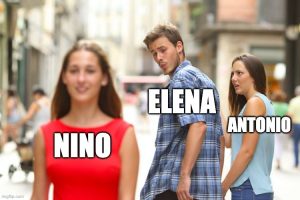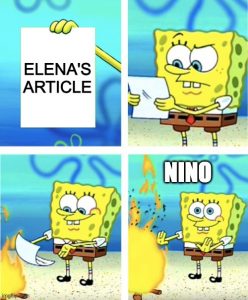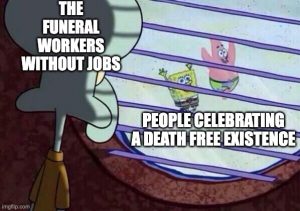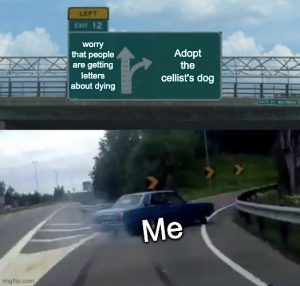I’m Just A Girl – My Brilliant Friend
“Women, they have minds, and they have souls, as well as just hearts. And they’ve got ambition, and they’ve got talent, as well as just beauty. I’m so sick of people saying that love is all a woman is fit for.” (Alcott, Little Women)

A wearying message arrives to Elena: Her friend has vanished. Yet, it’s not entirely surprising as her friend had “wanted not only to disappear herself, now, at the age of sixty-six, but also to eliminate the entire life that she had left behind” (23). This life casts a burden on Lila and results in her vanishing. To comprehend why, it is crucial to delve into the before– it cannot be understated “that there really had been a before” (36).
My Brilliant Friend sets the stage for Elena Greco and her friend Lila. The two live amongst the edges of Naples in a poorer neighbourhood. From Elena’s perspective, we experience Elena’s relationship with Lila from childhood to adolescence. Set amongst a background of eclectic characters, Elena and Lila stand out. With a list of characters in the beginning, the friendship of the two girls is the key theme. The two exist in a liminal duality–forever opposing yet existing complementarily.

Early on, Elena constantly compares herself to Lila. Lila was an intelligent student, making “[Elena] second in everything” (52). Despite having the opportunity to attend middle and, subsequently, high school, Elena still finds herself returning to Lila and her mind. Lila exudes a natural curiosity that has her soar over her peers. However, she can only attend school at the elementary level as her parents refuse to pay. The girls have many of the same ambitions (leaving the neighbourhood) but are destined to split. Thus, the diverging paths begin for the two girls, and a thematic device is shown in many parts.

A first read might have you considering the inherent jealousy between the two girls. I could recognize Elena’s pain at always feeling one step behind Lila. However, the authenticity of such feelings further cements the truth of the friendship.
Elena’s narrative may be filled with snipes at Lila, but considering the 1950s period, the community frowned upon the girls’ ambition. There is an internalized misogyny that is seen within the characters, and it is essential to notice that while looking at the overarching narratives of how women fit into the world.
I had to reread these narratives to understand if truly was a nasty relationship between the two girls. Of course, it isn’t, more so a reflection of the complex nature of growing up and being around other people–a sort of difficult period of finding your own identity amongst a sea of others (plus, puberty).
Within these 350 pages of agony, My Brilliant Friend is a very intense novel. Even just talking about the key relationship, there are many more that I haven’t mentioned. These girls exist alongside characters who are abusive, violent, and impulsive. But even in their differing lives, Elena and Lila are both connected to one another; just in the complex string of fate.
To be honest, reading this book was brutal. Ferrante truly projects her heart onto the paper, and I found myself needing to take a moment. The length is nothing if you understand why she placed each word as it was. Even as the first book in a series, she could convey an authentic view of childhood and leave you questioning.

ps. I was super sick reading this so I was already having a rough time. Enjoy the memes.
“It was as if, because of an evil spell, the joy or sorrow of one required the sorrow or joy of the other; even our physical aspect, it seemed to me, shared in that swing” (257)
Discussion Question
What is the effect of Elena and Lila being so different yet complementary? How can their relationship function as “Yin and Yang” or the “Sun and Moon”?

 “for it is not the same thing to bury a human being and to carry it to its final resting place a cat or a canary, or indeed a circus elephant or a bathtub crocodile…” (18).
“for it is not the same thing to bury a human being and to carry it to its final resting place a cat or a canary, or indeed a circus elephant or a bathtub crocodile…” (18).

